Skin Cancer Removal
A skin cancer is a ‘growth’ of tissue made up from cancer cells which continue to multiply. Cancerous (malignant) tumours can invade into nearby tissues and cause damage as well as spread to other areas of the body via the lymphatic system and the bloodstream. Interestingly, whilst most types of malignant tumour tend to grow fast and then spread (metastasise) to other parts of the body, this is more unusual in the case of skin cancer. In fact, only a small proportion of skin cancers actually cause problems elsewhere in the body. Nethertheless, early recognition and treatment is recommended for all forms of skin cancer and Mr Banwell is a world renowned skin cancer specialist.
Skin cancers can be divided into:
MELANOMA (‘MALIGNANT MELANOMA’)
This type of skin cancer develops from melanocytes. These are the pigment cells at the base of the superficial layer of the skin which can become abnormal.
NON-MELANOMA SKIN CANCER (NMSC)
These are divided into:
- Basal cell carcinoma (BCC, or ‘rodent ulcer’)- skin cancer which develops from basal cells.
- Squamous cell carcinoma (SCC)- skin cancer which develops from keratinocytes.
- Other- other types of skin cancer are rare (sarcoma, dendritic cell carcinoma, porocarcinoma, etc).
PREVENTION IS KEY
We know that skin cancer is caused by exposure to the Solar Constant – ie. the combination of ultraviolet radiation (UV-A and UV-B), infrared (IR) and visible light from the sun. Intense exposure via sunbed use also dramatically increases risk of skin cancer formation (between 30-70%) and thus avoidance of sunbeds is mandatory.
Prevention therefore is the key and minimising sun exposure as much as possible is fundamental. Sun burn episodes are highly predictive of future skin cancer formation so should be avoided. Simple measures such as avoiding the midday sun, wearing a hat, sunglasses and liberal use of sunscreen is key. Use of sunscreen – sun protection factor, SPF – has been shown to reduce the incidence of skin cancer (as well as cause less ageing!). Mr Banwell and his team therefore advocate daily use of sunscreen throughout the year and we can recommend the latest innovations in SPFs. Our current favourite is B3-T from Rationale Skin Care.
TREATMENT OF SKIN CANCER
Treatment of skin cancer is essentially divided into surgical treatments, photodynamic therapy (PDT) and medical treatments.
SURGERY
Simple surgical excision (removal) is probably the commonest modality used to treat both primary and recurrent skin cancers. Most can be performed under a local anesthetic as an outpatient procedure but some cases will require admission and treatment under a general anaesthetic. However, in some cases radiotherapy or medical treatments might be more suitable – if these is more appropriate for you then Mr Banwell will discuss these options.
Surgical removal of a skin cancer involves removing the growth and a certain amount of normal-appearing skin surrounding it (the “margin”): for basal cell and squamous cell carcinomas, margins are often 2 to 5 mm. Most of the time it possible to close the defect by simply sewing up the wound with sutures. However, this is not always possible and a skin graft or reconstruction using a ‘local flap’ (moving skin in the vicinity from one place to another) may be required – this is slightly bigger procedure and the recovery might take a little longer. Again, Mr Banwell will discuss the most suitable method in your particular case.
In over 95% of cases for primary Basal cell carcinomas (BCC) and Squamous Cell carcinoma (SCC) we are able to remove all of the skin cancer in one sitting; of course this is also dependent on the site, size, and pattern of the tumour. Often a further operation is required to take further tissue – this is considered a ‘belt and braces’ approach to minimise any future problems of recurrence and is termed a ‘wide local excision’.
Removal of skin cancers may be performed in the out-patient or inpatient setting depending on the extent and location of the lesion.
SURGERY FACT SHEETS
Click here for information sheet on Excision of Lesion
Click here for information on Split Skin Grafts (SSG)
Click here for information on Full Thickness Skin Grafts (FTSG)
Click here for information on Local Flap Reconstruction
Photodynamic Therapy (PDT)
Photodynamic therapy is a novel, advanced and refined treatment to treat severe sun-damaged skin, pre-malignant conditions (actinic keratoses and Bowen’s disease) as well as a particular subtype of basal cell carcinomas – superficial BCC (please note that other forms of BCC are not suitable for this kind of treatment).
These abnormal skin cells will absorb a chemical (topically applied to the skin) that, when exposed to light, destroys these abnormal cells. This process is called ‘Photodynamic Therapy’ (PDT).
Process of PDT
Once your skin assessment and diagnosis has been made and you are ready for PDT, Mr Banwell’s team will schedule 2 appointments. In outpatients, Mr Banwell will perform some curettage (superficial scraping of the lesion) followed by application of a cream called ALA (eg. Metfix). This cream will be applied to your skin and allowed to ‘incubate’, usually for about 2-3 hours. The treatment area is then exposed to a special light (eg. Actilight) to activate the ALA. This process stimulates your body’s immune system to destroy the abnormal sun-damaged cells. It is quite normal to get some redness, scaling and crusting in the treated areas following treatment; unfortunately some patients find the light activation treatment a little uncomfortable but this is usually short-lived. However, any crusting should heal within a few days to a week after which the treated area should be smoother; two treatments may be required to help heal the lesion.
Excitingly, some new so-called DAYLIGHT PDT formulations are also coming on to the market which allows rapid treatment in clinic with minimal inconvenience and return to clinic for activation. Mr Banwell and The Banwell Clinic are currently investigating and trialling these new treatment regimes.
Medical Treatments
CRYOTHERAPY (CRYOSURGERY)
Cryotherapy (using liquid nitrogen) is the process of freezing skin lesions. The extreme cold destroys skin tissue and also helps stimulate the immune system. Both processes help to clear/remove any lesion.
This is a very useful alternative to surgery for pre-cancerous lesions (actinic keratoses and Bowen’s disease) as well as for benign lesions such as warts and seborrhoeic keratoses.
HOW DOES IT WORK?
The cryogen is usually liquid nitrogen, though other substances can be used. It is usually applied with a spray-gun, but sometimes a cotton tip is used. Traditionally 3 ‘freeze-thaw’ cycles are used lasting a few seconds for each cycle. It stings when applied and can cause painful blistering within a few hours. This usually settles spontaneously and forms a scab.
Healing times are around 1-2 weeks on the face, 2-3 weeks on the trunk and up to 6 weeks on the lower legs. This is a very safe treatment but possible complications include scarring, infection or hypopigmentation (whitening) of the area treated. If the lesion recurs, it may need further treatment with cryotherapy or possibly another option such as surgery or specialised creams.
IMMUNE MODULANTS
Immune modulants are chemotherapeutic topical creams that stimulate the body’s own immune system to fight against the abnormal sun-damaged cells (actinic keratosis) or skin cancer cells (eg. Superficial BCCs).
5 FLUORO-URACIL (5-FU)
Topical 5-fluorouracil 5% cream (Efudix™) is a chemotherapeutic agent prescribed by a skin cancer specialist such as Mr Banwell. It may be very effective in the management of actinic keratoses , in-situ squamous cell carcinoma (Bowen’s disease) but is also effective for superficial basal cell carcinomas [please note that it is not effective for other types of BCC]. It is also sometimes used in combination with salicylic acid in the management of persistent and symptomatic viral warts in adults.
It works best on face and scalp but can be effective on other areas too. Pre-treatment with a topical retinoid may enhance the effect of fluorouracil by peeling off the top layer of skin.
The optimal way to use fluorouracil is unknown. Most skin cancer specialists recommend daily applications for 4 weeks, which may be repeated as necessary. To reduce the severity of adverse reactions, others recommend treatment for a few days, repeated as necessary, or twice weekly applications over several months.
Fluorouracil creates a cytotoxic destructive reaction to dysplastic (abnormal) cells. Treated dysplastic lesions become red, scaly and tender over several days then erode or ulcerate with continued treatment. The more dysplastic the lesion, the more vigorous the response. Treatment should be discontinued at the eroding stage to allow re-epithelialisation over the next one to four weeks.
IMIQUIMOD
Imiquimod (Aldara™) is another immune response modifier / immune modulant which is even stronger than 5 FU. It is used to treat actinic keratoses, Bowen’s and superficial basal cell carcinomas (BCC)s. It may also be useful for the treatment of pigmented patches of skin.
As mentioned above with 5-FU, the degree of inflammation with Aldara is quite variable. The greater the inflammation, in general the shorter the time and number of applications required to eradicate the lesion. About 10% get little or no inflammatory response and treatment is then nearly always ineffective. On the whole, as with other topical treatments, facial lesions clear quicker than those elsewhere. A course of treatment with Aldara usually ranges between 4 to 16 weeks.
PICATO
Picato is the latest generation immune modulant used for severe actinic lesions and BCCs. The chemical name for Picato is ingenol mebutate and it is formulated as a gel but unlike other immune-modulants, it is important to keep in the fridge. Picato use for skin cancers and actinic lesions is only used for a short period (2-3 days) and can cause quite significant responses on the skin with redness (erythema) and crusting. Whilst the manufacturers explain that most skin reactions settle after a few weeks, Mr Banwell usually observes that the erythema a skin changes can take 2-3 months to completely settle. Mr Banwell can chat to you regarding your suitability for Picato (ingenue meditate) treatment in Sussex, Kent, Surrey and London.






















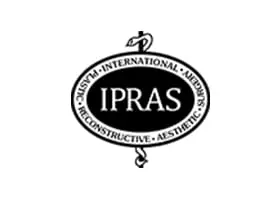

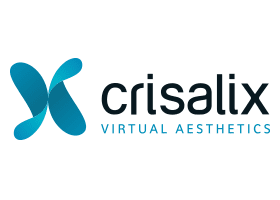





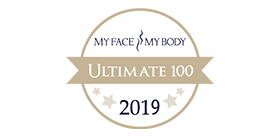


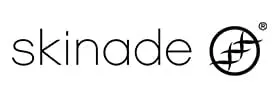






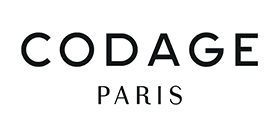


25th March 2025
Minimally Invasive Breast Surgery at Mr Banwell
Read More
24th March 2025
Revolutionary Ultrasound Breast Implant Check Now Available
Read More
18th March 2025
Body Contouring Surgery After Significant Weight Loss
Read More